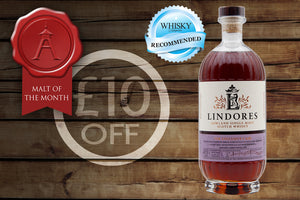
Talisker
Whilst Talisker may have lost its status as the Isle of Skye’s only distillery in 2017, it retains an important role within the Diageo ranks and a high profile amongst...
Talisker
Whilst Talisker may have lost its status as the Isle of Skye’s only distillery in 2017, it retains an important role within the Diageo ranks and a high profile amongst malt enthusiasts. Whilst it has been bottled as a single malt for many decades and received worldwide acclaim, it also performs an important function of providing content for its master’s blends.
In recent years the Talisker range of single malts has grown dramatically thanks to the pursuit of No Age Statement releases. These have augmented the distillery range rather than replace any of its classic expressions that are viewed as the 10 and 18-year olds, with the 25 and 30 statements providing wonderful experiences for those with deeper pockets. The No Age Statement arsenal includes Skye, Storm, Port Ruighe and Dark Storm, with Neist Point offering a more premium example. These are a mixture of different cask types and approaches with various effects, but generally they’ve been disappointing when set against the high benchmark of what Talisker is revered for. Particularly, as some of these whiskies charge a higher price for an inferior experience.
The distillery itself is set alongside the small village of Carbost with a dramatic coastal location greeting any visitors to the distillery. It’s an extremely popular destination, with Diageo investing heavily in a new visitor centre and tasting area. The Isle of Skye is enjoying a tourism boom and Talisker is no different welcoming nearly 70,000 visitors annually. A well-stocked shop offers all the Talisker releases, some Diageo rarities and a wealth of related merchandise.
Talisker itself was established in 1830 although illicit distilling was rampant on Skye. The Islay distilleries love to regale tales of avoiding the law and small stills supplying the local popular with their whisky. Skye was deemed to be even more remote by some Excisemen and a posting they did not relish with the weathered and arguably wild local population doing as they saw fit. This also applied to early workers at Talisker who felt helping themselves to a regular quantity of whisky was a right rather than a privilege. Set further away from the influence of government than Islay, Skye is a beautifully rugged and inspiring environment.
Talisker was established by Hugh and Kenneth MacAskill, who history shows were forceful opportunists and unsympathetic to the local population by engaging in clearances of families from the land. Some families were driven off Skye in search of a new beginning or encouraged to populate new settlements such as Carbost. This was the fashionable landowner tactic of the period with the Sutherland’s establishing the town of Brora along similar lines. In both cases a distillery was created to provide employment and profit to its already cash rich owners. Talisker under the ownership of the MacAskill’s was not a success and it moved into banking ownership within a couple of decades, before being sold to Donald MacLennan in 1857 for the princely sum of £500. Owners came and went as demand for whisky started to rise, but it wasn’t until 1880 with the arrival of the experienced duo of Alexander Allen and Roderick Kemp that Talisker started to make a name for itself.
They brought much needed investment including a nearby pier where merchant vessels could safely dock and receive casks from the distillery. Skye may now be connected to the mainland by a bridge but prior to 1995, the channel had to be crossed by boat and there was still the long trek north towards the crossing. The distillery moved into a new company along with the Imperial and Dailuaine distilleries prior to the Distillers Company Limited taking over in 1916. This was a forerunner of Diageo and its where Talisker remains to this day.
Notable events at the distillery include the practice of triple distillation until 1928 and this goes some way to explaining the unusual still configuration on site. With 5 stills still present the importance of a strong peat element and reflux helps create a charismatic style of new make. Like Mortlach and Springbank it retains a historical element – almost an oddity by accident – that would not be pursued in any distillery design of recent times. Even when the distillery was destroyed by fire in 1960, the still room was faithfully rebuilt to ensure the Talisker character was retained. This was followed in 1972 by the closure of its own maltings as was commonplace across the industry. Talisker distillery is a survivor and one that thanks to its medium level of peat offers a balance of distinctive features that are lacking in many of today’s whiskies.


